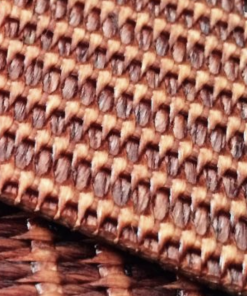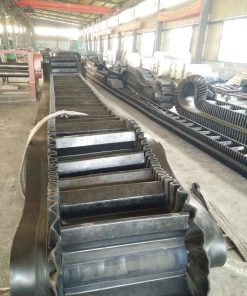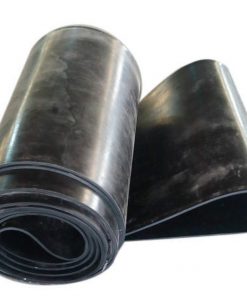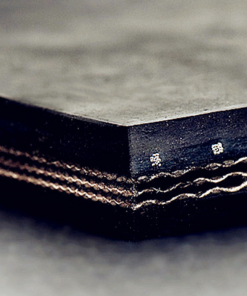Description
The most essential criterion that defines a conveyor belt’s lifetime is its physical capacity to withstand abrasive wear. Different materials and abrasion causes necessitate different types of cover rubber.
Belts that transport heavy or sharp materials such as boulders, lumber, or glass, which cut and gouge the belt surface, require different resistance qualities than belts that transport ‘fine’ materials such as aggregate, sand, and gravel, which scour the rubber cover like sandpaper.
In general, in belt applications, there are two types of abrasion. The transmitted material rubbing against the rubber cover causes the first and most typical kind of wear. The belt coverings have a tendency to wear evenly and smoothly. Wear is affected by the kind of material carried; for example, coal is typically non-abrasive, but hard rock and taconite pellets wear quite quickly. The wear rate is affected by the density of the material and the speed at which it is carried, with heavier materials and quicker speeds raising the wear rate.
Cutting and gouging is a more aggressive kind of abrasion in which jagged or sharp surfaces from materials such as limestone, granite, and ores cut the belt cover and remove it in “chunks.”
Suitable for heavy-duty operations due to polyester/polyamide(EP) fabric structure design
Low elongation with high reliability and durability
High adhesion between plies and between cover and ply.
Advanced production technologies and facilities ensure ep conveyor beltings extended service life
Available width from 300mm to 2600mm, depending on rubber conveyor belts thickness and length
Different cover quality enables EP conveyor belts to transport materials which are -40℃ to 300℃, combustible, oily and cold.
Technical data:
|
Cover Rubber grade |
8MPA,10MPA,12MPA,15MPA |
DIN-X,Y,W |
|
Belt width (mm) |
500,600.650,700,800,1000,1200 |
18″,20″,24″,30″,36″,40″,42″ |
|
Tensile strength |
EP315/3,EP400/3,EP500/3,EP600/3 |
330PIW, 440PIW |
|
Top+Bottom thickness |
3+1.5, 4+2, 4+1.5, 4+3, 5+1.5, |
3/16″+1/16″, 1/4″+1/16″ |
|
Belt thickness |
3mm,4mm,5mm,6mm,7mm,8mm,9mm,10mm,12mm,15mm,20mm,25mm |
|
|
Belt length |
10m,20m,50m,100m,200m,250m,300m,500m |
|
|
Belt edge type |
moulded(sealed) edge or cut edge |
|
Combining with the low elongation property of polyester and the excellent bending property of polyamide, EP conveyor belts, also named polyester conveyor belts, are better resistant to impact, shock, and abrasion. Meanwhile, EP conveyor belts are already becoming more and more popular over decades in crusher plants, cement, mines, and ports with heavy load and high speed.
Many thanks for your trust and support! For further information please contact sales@conveyorbeltfactory.com





